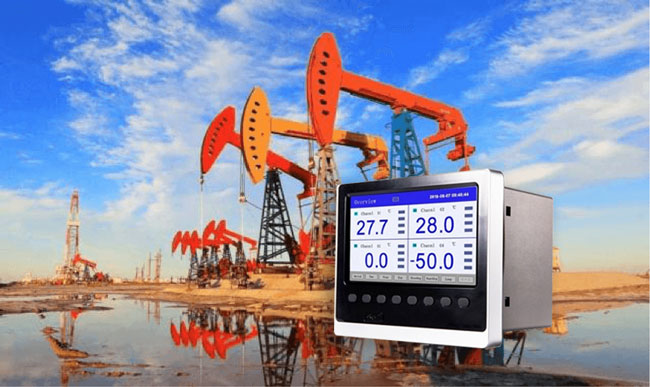The oilfields are scattered and the oil wells are unevenly distributed, often several kilometers or even dozens of kilometers away from the oil plant. Therefore, the pipelines for transporting crude oil and natural gas are spread all over the oil region. It is difficult to obtain the oil/gas production of each well and each region in real-time. In the past, the oil production stations, combined stations, and sales and sales offices of major oil fields mostly used the form of filling in reports at each oil production station to count the oil/gas production volume of each well and each area every day and then obtained the monthly production by accumulating. This method not only It takes a lot of manpower and material resources, but it is easy to make mistakes, and it is also seriously delayed in time. It is difficult for oil production plants and oil fields to dynamically grasp the oil production situation of each well or even each area, and it is difficult to respond quickly to emergencies. even cause major losses. Therefore, it brings a lot of inconvenience to the oilfield management and has a great impact on the improvement of the overall benefit of the oilfield. The combination of paperless recorders and wireless communication technology effectively solves these problems.
What is a paperless recorder?
The paperless recorder will record the collected data/calculated data in the internal storage system of the instrument according to time without consuming any common recording tools such as paper, pen, and ink. After calculation and simulation, the stored data recorded in the instrument will be displayed on the LCD screen. Although the paperless recorder system has a simple hardware structure and low investment, it not only realizes the real-time collection and display of oil production in the oil field, is a measure of oil field management, but also can greatly reduce the occurrence of accidents.

The function of the paperless recorder in an oilfield system
The main parts of the system to realize these functions are: paperless recorder, vortex flow transmitter, pressure transmitter, Pt100 thermal resistance, wireless communication equipment, and rear computer system. The main functions of the paperless recorder in the system are:
- Timeliness. The rear of the oil field can grasp the production dynamics of each region or even each oil and gas well in real-time, and provide a decision-making basis for the rapid formulation of production management plans.
- Automatic alarm system. If an unexpected situation occurs, such as an oil pipeline rupture, resulting in a large difference between the main flow and the branch flow, the host computer will send an alarm after calculation to remind users to take timely measures to reduce accident losses.
- In local areas such as oil production stations and joint stations, if there is an abnormal situation, if the pressure of a certain pipeline drops seriously, the relevant valves can be automatically closed to prevent accidents.
- Improve the accuracy of statistics. The system provides various forms of automatic reports, which not only saves a lot of manpower but also reduces errors caused by human factors.
- Less system maintenance. Due to the use of wireless communication technology, there are no communication lines in the field, which can greatly reduce the amount of maintenance.
- In the oil production station and combined station, the production situation of each well or each oil production station can be monitored, not only the instantaneous flow rate, but also the cumulative flow rate; each parameter not only has a bar chart indication, but also has a historical curve display, and each The parameters are clear at a glance.
- After the computer located at the back as the data server receives data wirelessly, this machine can not only display, perform data processing and report printing but also share data through the network.
- Double recording function. The paperless recorder and the rear computer record at the same time, and they are redundant with each other, which can better prevent data loss. Even if the data in the computer is lost due to various reasons, historical data can be easily retrieved from the logger.
- The on-site part of the system adopts a paperless recorder, which integrates collection, control, recording, and display, with a simple structure and powerful functions.
- Equipped with a complete set of computer management software, users can easily configure the screen and process the required data according to their needs.

